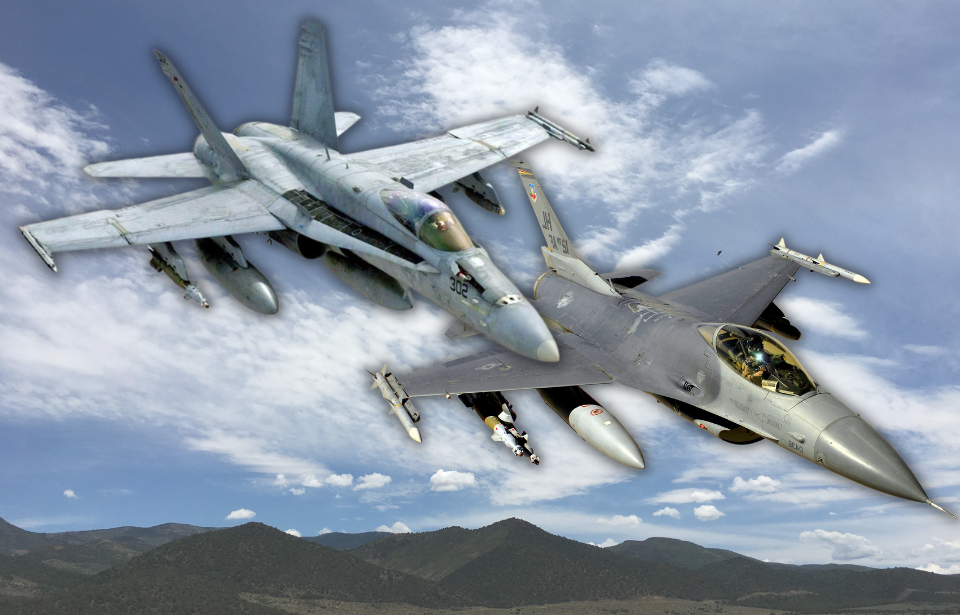General Dynamics F-16 Fighting Falcon vs McDonnell Douglas F-18 Hornet – which would triumph in an aerial battle? These two aircraft rank among the most reliable and lethal in the US military’s arsenal, having played crucial roles in winning wars, defending ships, and showcasing the cutting-edge of American technological innovation.
Despite their similarities, the F-16 and F-18 have several differences, and it’s these distinctions that will decide which aircraft is truly the better of the two.
History of the F-16 Fighting Falcon

The General Dynamics F-16 Fighting Falcon, now manufactured by Lockheed Martin, was introduced in 1978. This multirole, air superiority fighter costs upwards of $14 million to produce, and its adaptability and speed make it an indispensable fixture of the Air Force.
Over 4,600 have been manufactured since 1973, with a number of countries (Pakistan, Chile, Belgium, etc.) operating the aircraft through such conflicts as Operation Desert Storm, the 1982 Lebanon War and the Soviet-Afghan War. The F-16’s combat success and popularity has resulted in the fighter becoming the world’s most numerous fixed-wing aircraft in active military service.
History of the F-18 Hornet

The McDonnell Douglas F-18 Hornet was introduced in 1983 as America’s first all-weather fighter and attack aircraft. Flown by both the US Navy and Marine Corps, it’s designed to deploy from aircraft carriers and is considered one the most aerodynamic aircraft operated by the US military.
The F-18 is favored for its increased weapons-carrying abilities. It’s operated by such countries as Spain, Finland and Canada, among others, and has seen action during the likes of Operation El Dorado Canyon, the War In Afghanistan and the Iraq War.
In 1999, the Boeing F/A-18E/F Super Hornet entered service, as a replacement for the Grumman F-14 Tomcat. Larger and more advanced than the standard F-18, its equipped to carry air-to-surface and air-to-air missiles, with its primary armament being the M61 Vulcan. Over 600 have been produced, and it continues to serve alongside its less-advanced predecessor.
Design of the F-16
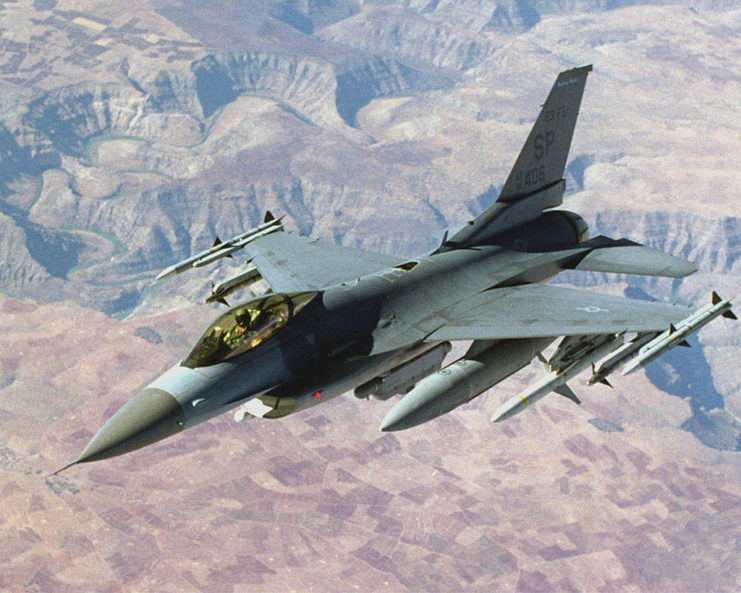
Despite its earlier design, the F-16 Fighting Falcon is one of the most cost-effective, efficient and maneuverable aircraft in the Air Force’s arsenal. Thanks to the development of older aircraft, such as the McDonnell Douglas F-15 Eagle and General Dynamics F-111 Aardvark, it’s equipped with reliable systems that give it a wide combat radius.
The F-16 was developed during the Lightweight Fighter (LWF) program as the YF-16. It can locate targets, regardless of weather conditions, and can fly more than 500 miles in an air-to-surface role. The aircraft can deliver weapons with extreme accuracy, all while defending itself from enemy action. It’s also the first to use the relaxed static stability/fly-by-wire (RSS/FBW) flight control system, giving it increased maneuverability and performance.
The cockpit of the F-16 was redesigned to include a bubble canopy, which gives pilots increased visibility through the side and rear. A side-stick controller was also implemented for better control while performing high-g missions. This feature includes hand pressure sensors that send electrical signals to the flight control systems, allowing for increased instantaneous changes while in a tense combat situation.
Onboard avionics systems are equipped with advanced navigation, including enhanced global positioning (GPS) and inertial navigation systems (EGI), which send information to pilots. Counter-pressure pods, high-tech radios and instrument landing systems are also integrated into the aircraft.
Design of the F-18

The F-18 Hornet is also an all-weather fighter that features a fly-by-wire system, advanced navigation and other similar features. However, one aspect sets it apart from the F-16. Its canted vertical stabilizers allow for the F-18’s extremely high angle of attack, giving pilots the ability to perform high-g pull-ups à la Top Gun (1986).
On top of this, the F-18 was designed with Leading-Edge Extensions (LEXs), allowing pilots to remain in control while flying at higher altitudes. It was built with the intention of requiring less maintenance, meaning reduced downtime is required between missions.
Finally, the F-18 was one of the first to use multifunction displays, meaning pilots can switch between fighter and attack roles (or both) with just the push of a button.
F-16 vs F-18 – Need for speed
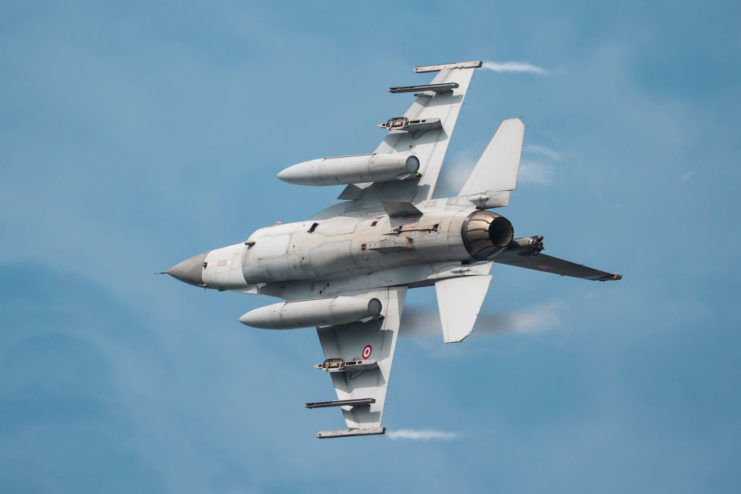
Both the F-16 Fighting Falcon and F-18 Hornet are capable of reaching incredible speeds. However, they do differ ever so slightly. The former can reach a top speed of Mach 2 – twice the speed of sound. The F-18, on the other hand, can only reach Mach 1.7-1.8.
The two also have different engines. The F-16 is a single-engine aircraft equipped with one of two types of power plants, either a Pratt & Whitney F100-PW-200/220/229 or a General Electric F110-GE-100/129. These produce around 29,000 pounds of thrust. The F-18 is powered by two General Electric F404-GE-402 turbofan engines, which produce 17,750 pounds of thrust.
Survivability is greatly affected by the number of engines an aircraft has. If an F-16 loses its lone one, the pilot has no choice but to eject before the fighter nose dives. F-18s, however, can survive on one engine if the other is lost, enabling the aircraft to safely return back to the aircraft carrier.
F-16 vs F18 – How do they fair in aerial combat?
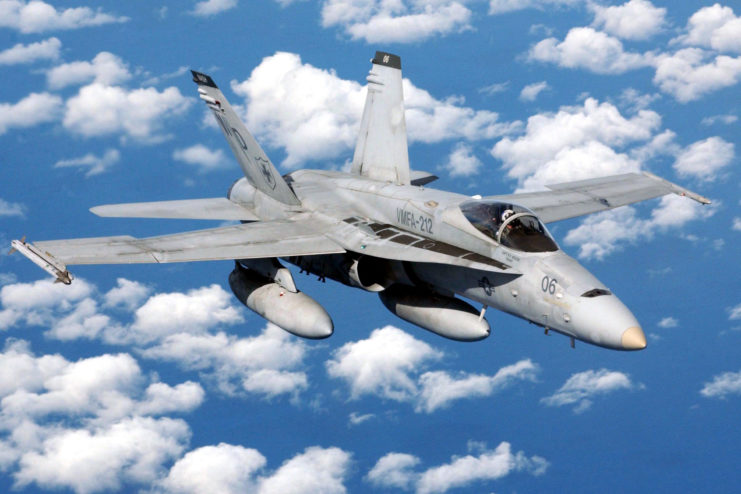
Combat is where the F-16 Fight Falcon and F-18 Hornet truly take off. Both are capable of air-to-air, air-to-ground, surveillance and reconnaissance missions. Several slight differences help define this. The F-18 has a range of 1,253 miles, vs the F-16’s much higher 2,002 miles. The latter also has a higher ceiling of 55,000 feet, compared to the F-18’s 50,000 feet.
The F-16 can stay in the air for much longer without refueling. It’s also faster and more maneuverable, and can withstand higher g than the F-18. Its smaller size and bubble canopy cockpit provide increased visibility, a key factor in determining the outcome of a mission.
One study analyzed dogfight victories by looking at the correlation between who was able to get “eyes on” their targets first and the outcome of the engagement. Typically, whoever first saw their opponent had an immediate advantage, and a wider range of visibility combined with a smaller aircraft meant the F-16 would have a better chance of locking eyes first.
F-16 vs F-18 – How maneuverable are these advanced aircraft?
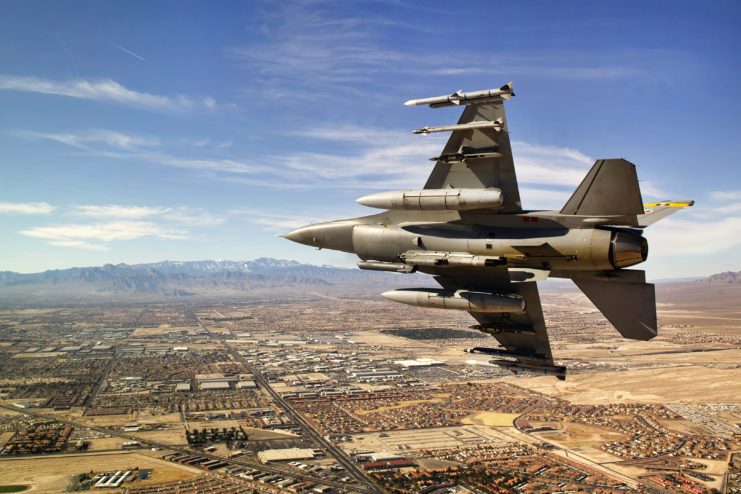
Speed and firepower are only half of what makes an aircraft successful in combat. The ability to maneuver through the air and around enemies and obstacles can make all the difference when pursuing – or outrunning – someone.
The F-16 Fighting Falcon can handle maneuvers of up to 9 g, giving it the ability to quickly change direction at incredible speeds and angles. During the design process, the engineers at General Dynamics selected a variable-camber wing with airfoil, which can be adjusted through the relaxed static stability/fly-by-wire flight control system.
The F-16 was also intentionally designed to be slightly aerodynamically unstable, to reduce drag and improve its maneuverability. When an aircraft is aerodynamically stable, more effort has to be exerted, producing drag and lessening maneuverability. This and the fighter’s combat radius “exceed that of all potential threat fighter aircraft.”
The F-18 Hornet is close behind with 7.5 g worth of maneuverability. Its thrust-to-weight ratio and dual engines help make it a powerful opponent in a dogfight, and its Leading Edge Extensions and canted vertical stabilizers allow for easy handling, even when attacking at high angles. Similarly to the F-16, it features a digital fly-by-wire control system.
F-16 vs F-18 – Firepower is where it’s at
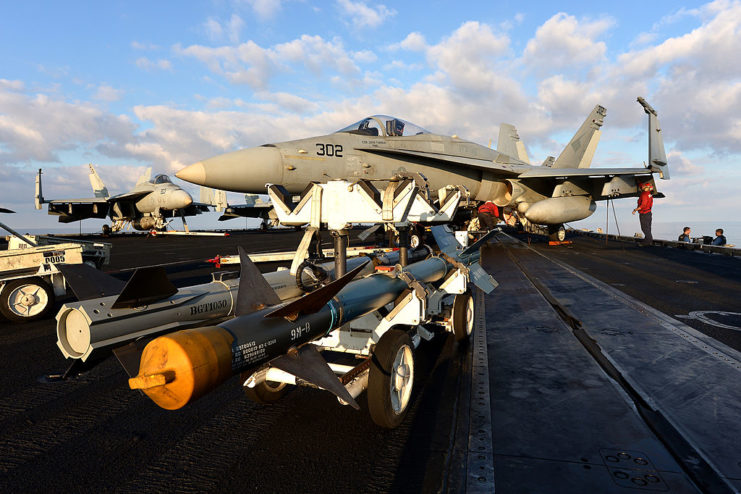
Air Intercept Missiles (AIMs) are a key part of combat for modern aircraft, but the F-16 Fighting Falcon originally didn’t equip radar-guided missiles. It wasn’t until the Block 15 ADF variant was unveiled in 1986 that it was able to fire the AIM-7 Sparrow.
Other air-to-air missiles equipped by the F-16 include the AIM-9 Sidewinder, the MBDA R550 Magic 2, the Raytheon AMRAAM, and the MBDA Skyflash and ASRAAM. Ordnance is fired from nine hard points – three under each wing, one on each wing tip and another under the fuselage – and launched via LAU-88 launchers and MAU-12 and Orgen ejector racks.
The port wing of the F-16 contains a 20 mm General Electric M61A1 multi-barrel cannon. There are also several air-to-surface missiles that can be carried by the aircraft (Maverick, Shrike and HARM), as well as anti-ship missiles, such as the AGM-119 Penguin and AGM-84 Harpoon. This is on top of its Paveway laser-guided bombs, smaller munitions, and Joint Standoff and Direct Attack weapons.
The F-18 Hornet could carry radar-guided missiles from the get-go, as it was designed to replace an attack aircraft and defend aircraft carriers. It’s largely equipped with the same armament as the F-16 – it’s just that, for the most part, it had many of the weapons when it entered service.
Which is the better aircraft?
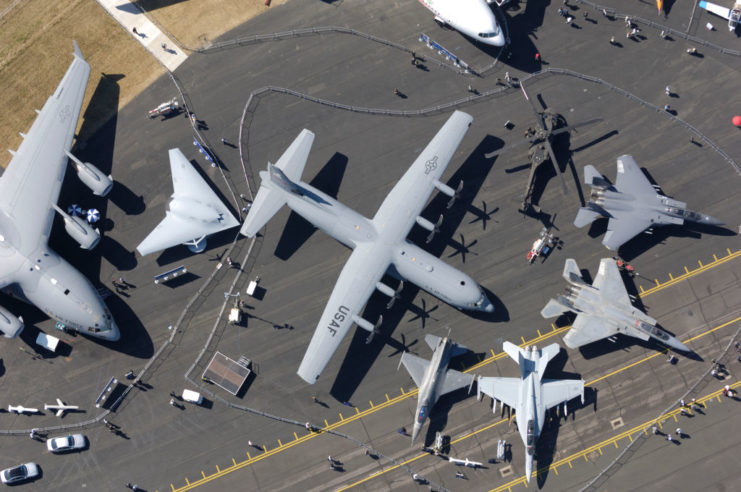
Despite their differences, the F-16 Fighting Falcon and F-18 Hornet are both cutting-edge, dependable and lethal. Some say it has less to do with the aircraft and everything to do with the pilots who fly them. One Air Force traffic controller shared his opinion on the best pilots in the military, telling SOFREP:
“[The Navy pilots] are very precise flyers. When they would come in on a landing approach they would be dead perfect on the glide path. I can’t remember ever telling any of those Navy guys to correct their rate of descent or speed. They would be flying PERFECTLY on it the whole time. […] They were just… better.”
More from us: The US Air Force Panicked When Its Top-Secret Stealth Fighter Crashed Into the California Wilderness
Certain aircraft are also more suited to different scenarios. An F-16 would be a better choice for long-range missions that require more speed and maneuverability, while the F-18 would provide more firepower and offensive capabilities in a combat scenario. While the former was initially slated to be replaced by 2025, delays have resulted in it being guaranteed a further two decades of service. The F-18s are slated to be replaced at some point between 2025-30.
